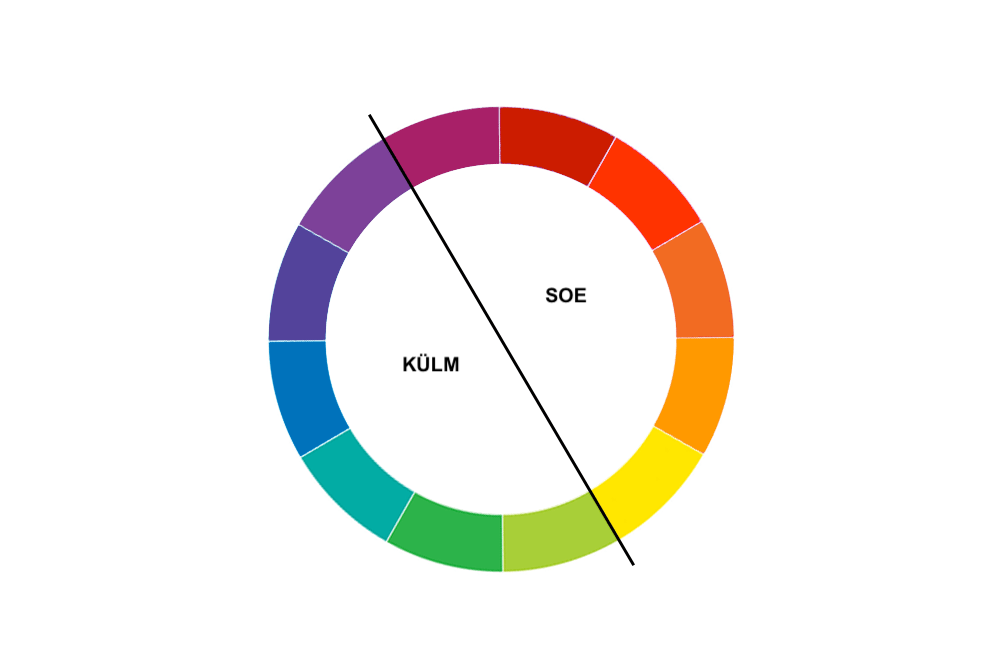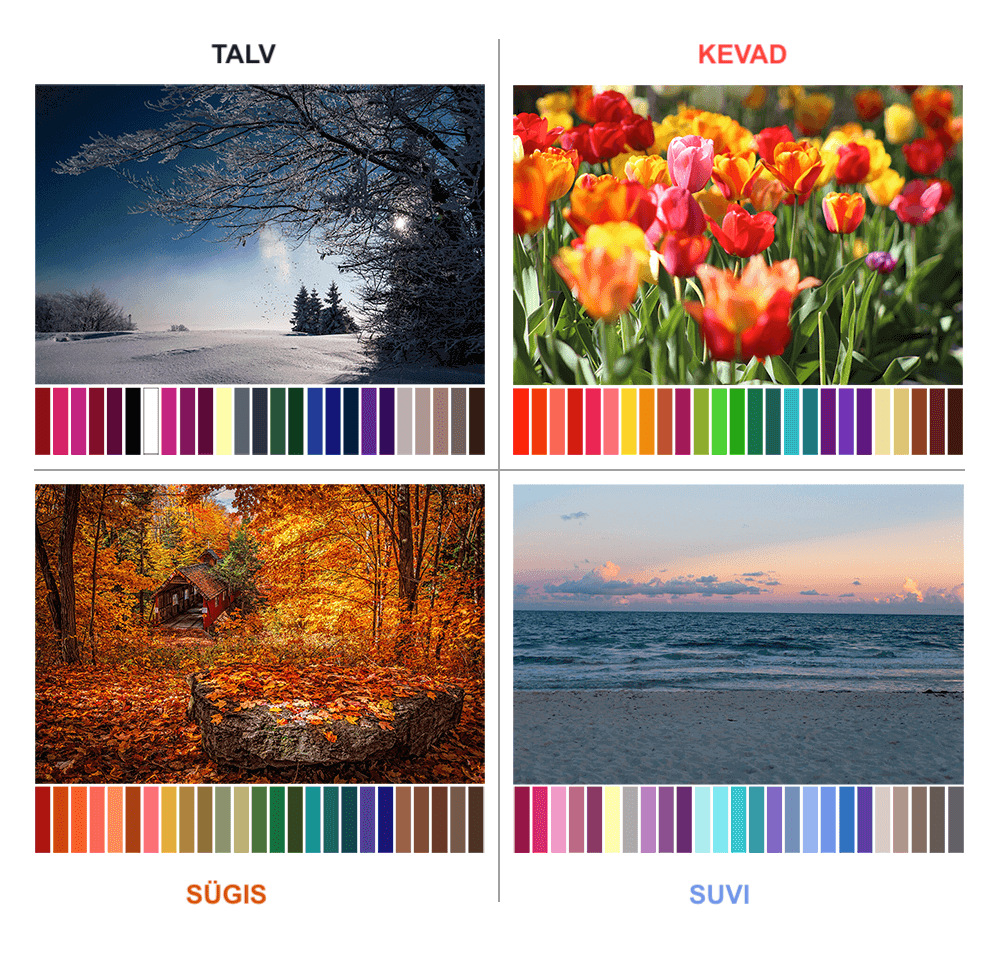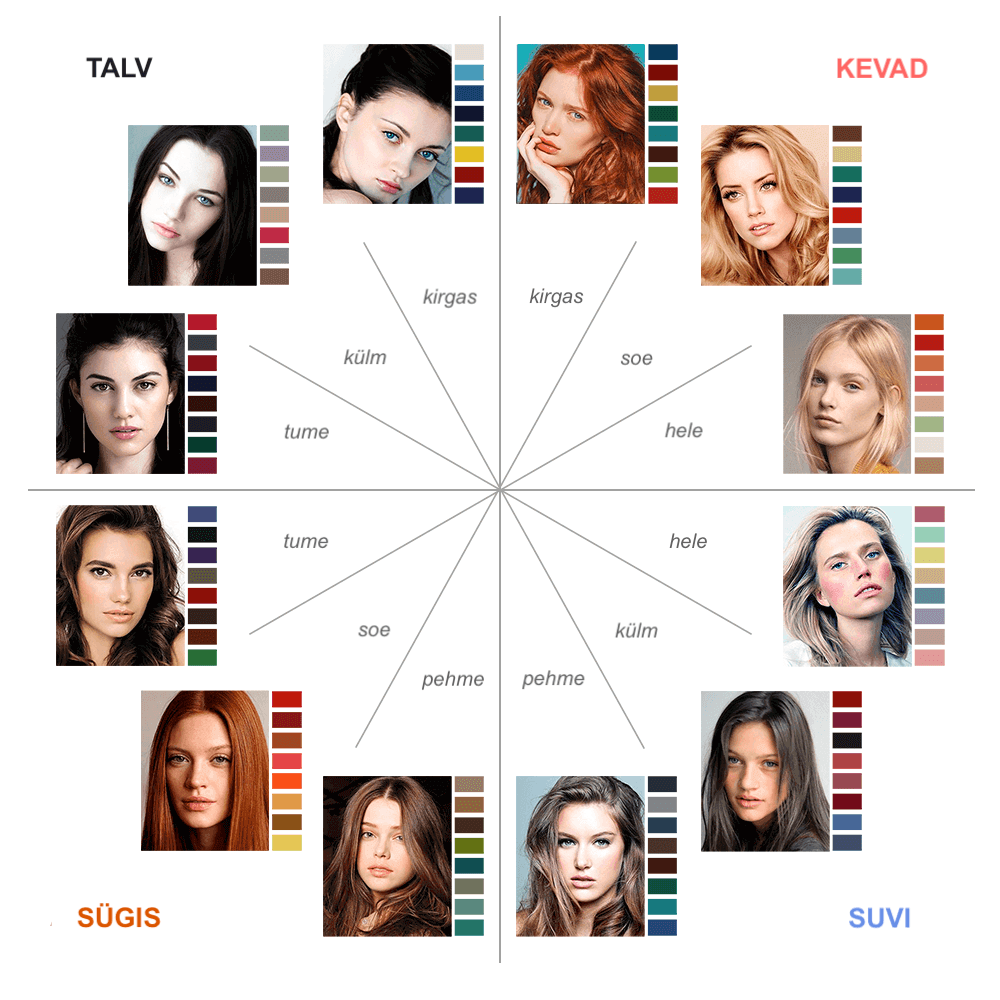What is color analysis?
The Seasonal Colour Analysis is a tool to help us identify which colours suit you best. Based on your overall appearance and in particular the tone of your eyes, hair and skin, we will assign you one of twelve colour seasons. Each colour season comes with a palette of colours specifically designed to match your natural eye-hair-skin tone.
A clothing colour palette is harmonious if it emphasises certain aspects of your own natural colouring. These aspects are divided into twelve seasons-months, each with a specific colour palette. Which of the twelve months, the seasons, you fall into depends on the natural colour of your eyes, hair and skin.
It is important to mention that the seasonal colour analysis does not combine colours according to personality type or body shape. Rather, the process is about identifying the three aspects of your natural colours and combining them with similar aspects in your outfit.
12-month, seasonal colour theory
To understand the twelve-month, seasonal colour analysis, we must first understand the three aspects or dimensions of colour. These are:
Tone and temperature (undertone) in colour analysis
A shade defines the colour family of an object, or its hue – green, purple, orange, etc.

A shade defines the colour family of an object, or its hue – green, purple, orange, etc.

This does not mean that all yellows are warm and all blues are cool. Each colour can have a warm or cool undertone – think acid yellow (yellow mixed with green) and tangerine yellow (yellow mixed with orange). The first is a cooler shade than the second. See the examples below:
Colours that are blue-based are classified as cool – the more blue, the cooler the colour. The yellow primary colours are warm. And warmer colours contain more yellow.
If the undertone of a colour is unnoticeable, it is a neutral colour – neither warm nor cool. The example shows green and red: while pure green is composed of yellow and blue in equal parts, pure red contains neither blue nor yellow.

2. Value (depth) in colour analysis
The value represents the depth of the colour, or how light or dark it is.
Light colours have white added and are called light shades. Similarly, dark colours have black added to them and are called dark shades.

3. Saturation/Clarity (ClarityChroma) in colour analysis
Luminosity/clarity defines the saturation of a colour or how light (clear) or dull it is. Another way to understand chromaticity is to look at how “greyish” a colour is.
Clear and bright colours don’t look grey at all because they are very saturated. The more saturation is removed, the closer the colour approaches grey and the duller its hue becomes.
Adding grey to a colour makes it a matching hue.

As the seasons change in nature, the colour schemes change. Think about the colours in the landscape in four different seasons – spring, summer, autumn and winter – with fresh tones in spring, soft tones in summer, rustic tones in autumn and icy tones in winter. This colour change is caused by the reflection of light in nature. Every time the sun changes its position, it paints the world in a new light.

The colour theory of the 12 moons is based on the 12 moons of nature. Each month has a unique colour palette. By looking at a person’s skin tone, eye tone and hair tone, it is possible to determine which moon best matches a person’s own natural colour palette.

Want to know more about colour analysis or find unique colours to suit you?
Call or write
Ave Ader
+372 5689 6079
ave@beautybyave.com
You are welcome!
